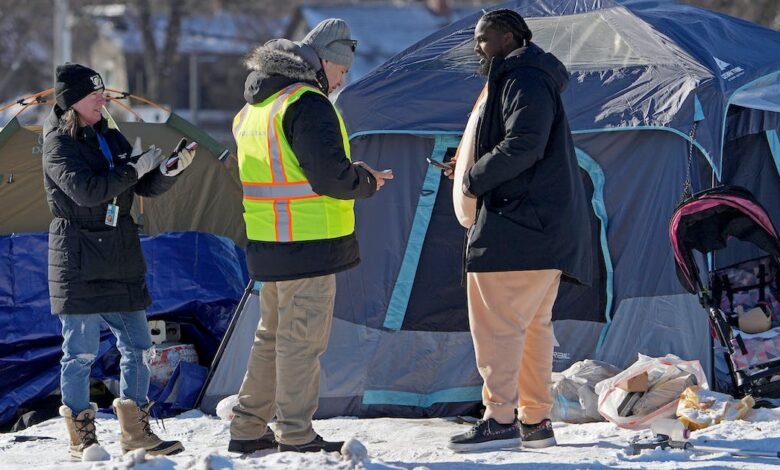
The number of people experiencing homelessness jumped in 2023 both nationwide and in Minnesota, with the local increases outpacing the national average on some measures.
The data, which is collected nationwide each January during a Point-in-Time count and was released last week by the U.S. Department of Housing and Urban Development (HUD), found 8,393 people in Minnesota were experiencing homelessness in 2023. That amounts to a 6% increase from 2022. Nearly half of those were people in households with children, a group that increased by 27% compared to last year at the same time, according to the Minnesota Interagency Council on Homelessness.
Minnesota’s homeless population is disproportionately people of color. About 64% were people of color compared to about 22% of the state population, according to the U.S. Census.
Nationally, HUD reported a 12% uptick in the number of people experiencing homelessness, with more than 650,000 identified last January, the most since reporting began in 2007. That includes more than 186,000 people in families with children, a 15% increase nationwide over 2022.
The number of unsheltered people climbed nearly 10% in the U.S., but Minnesota bucked that trend, seeing a slight statewide decline. In Minnesota, roughly 20% of people experiencing homelessness are unsheltered, while 60% are in emergency shelters and the rest in transitional housing.
Additionally, about 21% of Minnesotans experiencing homelessness reported having severe mental illness, and about 12% struggled with substance abuse. People sleeping outside were significantly more likely to suffer from those problems.
“Homelessness is solvable and should not exist in the United States,” said Marion McFadden, HUD principal deputy assistant secretary for community planning and development.
Federal officials noted the American Rescue Plan, approved by Congress and President Joe Biden in 2021, had billions in temporary funding for homelessness prevention that has run out. They noted the president’s budget request includes new money for rental assistance and affordable housing.
In Minnesota, state officials said the end of the eviction moratorium in 2022 led to an increase in evictions, which likely contributed to more residents experiencing homelessness. Through September, more than 15,000 evictions were filed in Minnesota district courts with about one-third of those cases in Hennepin County.
Source link




